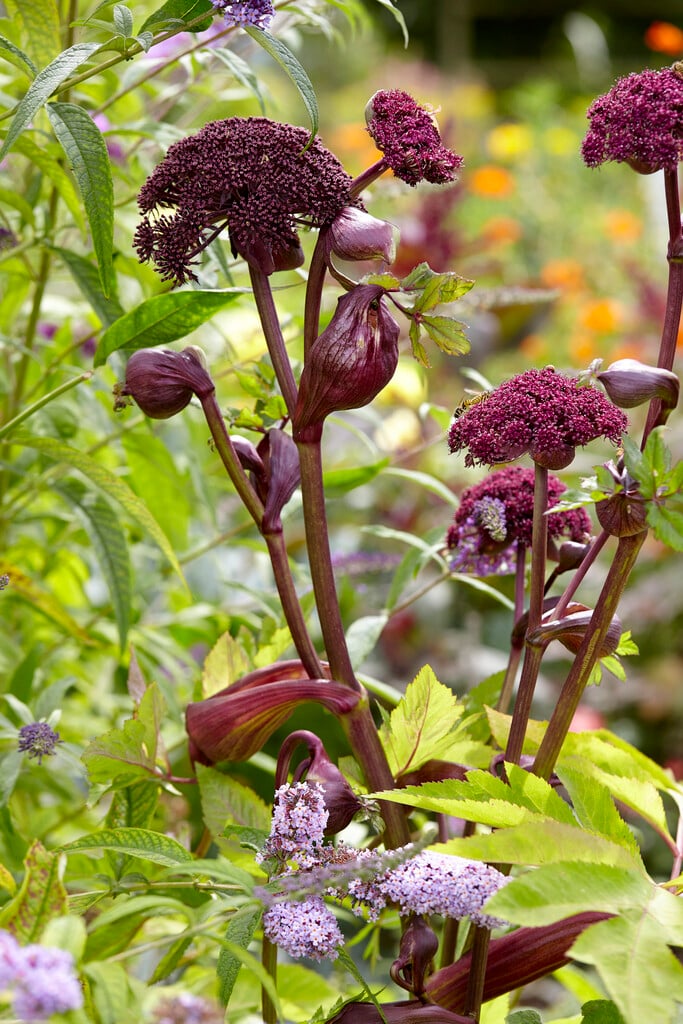Angelica gigas
purple angelica
A robust biennial or short-lived perennial about 1-2m tall, with mid-green leaves to 40cm long, composed of diamond-shaped leaflets, and branched, reddish-purple stems bearing large, dense umbels to 12cm across of deep purple flowers in late summer and early autumn
Size
Ultimate height
1.5–2.5 metresTime to ultimate height
2–5 yearsUltimate spread
1–1.5 metresGrowing conditions
Moisture
Moist but well–drainedpH
Acid, Alkaline, NeutralColour & scent
| Stem | Flower | Foliage | Fruit | |
| Spring | Purple | Green | ||
|---|---|---|---|---|
| Summer | Purple | Purple | Green | |
| Autumn | Purple | Purple | Green | |
| Winter |
Position
- Partial shade
Aspect
West–facing or East–facing or North–facing
Exposure
Sheltered Hardiness
H6Botanical details
- Family
- Apiaceae
- Native to GB / Ireland
- No
- Foliage
- Deciduous
- Habit
- Clump forming
- Genus
Angelica are large biennials or herbaceous perennials, some monocarpic, with pinnately or palmately divided leaves and small white or purple flowers in large umbels
- Name status
Correct
- Plant range
- Japan, Korea, China
How to grow
Cultivation
The ideal position is a deep, moist, loamy soil in full or partial shade but it can tolerate drier conditions if mulched. A short-lived perennial.
Propagation
Propagate by seed sown in a cold frame with good light, as soon as ripe.Exposure to light is required for germination. Move seedlings when young as older plants resent disturbance
Suggested planting locations and garden types
- Architectural
- Cottage and informal garden
- Wildlife gardens
- Flower borders and beds
Pruning
Cut back after flowering
Pests
Diseases
Susceptible to powdery mildews
Get involved
The Royal Horticultural Society is the UK’s leading gardening charity. We aim to enrich everyone’s life through plants, and make the UK a greener and more beautiful place.
